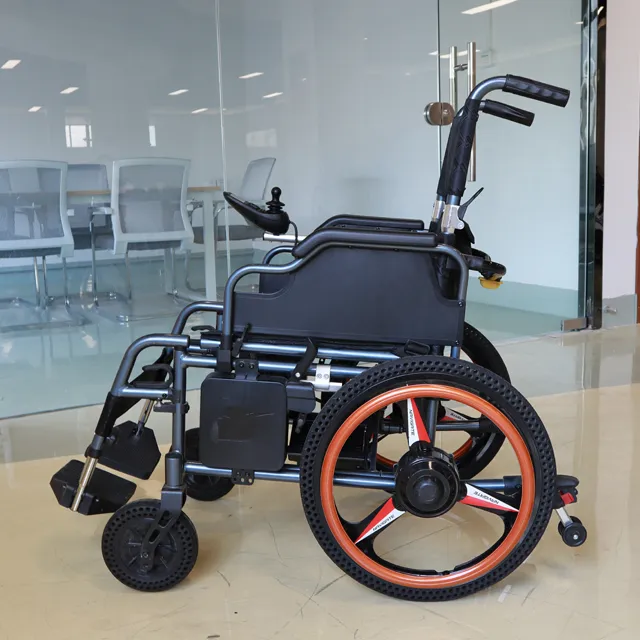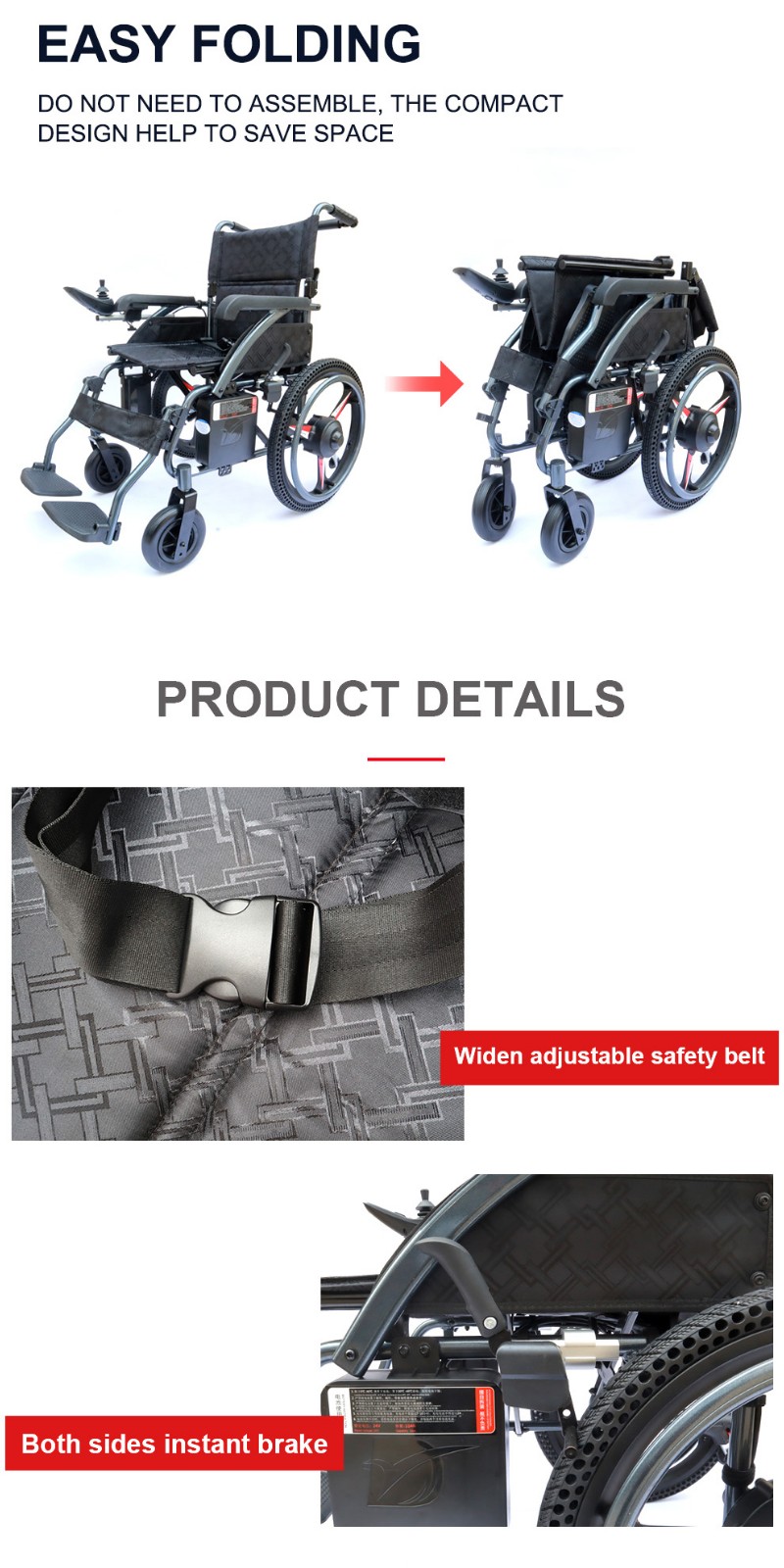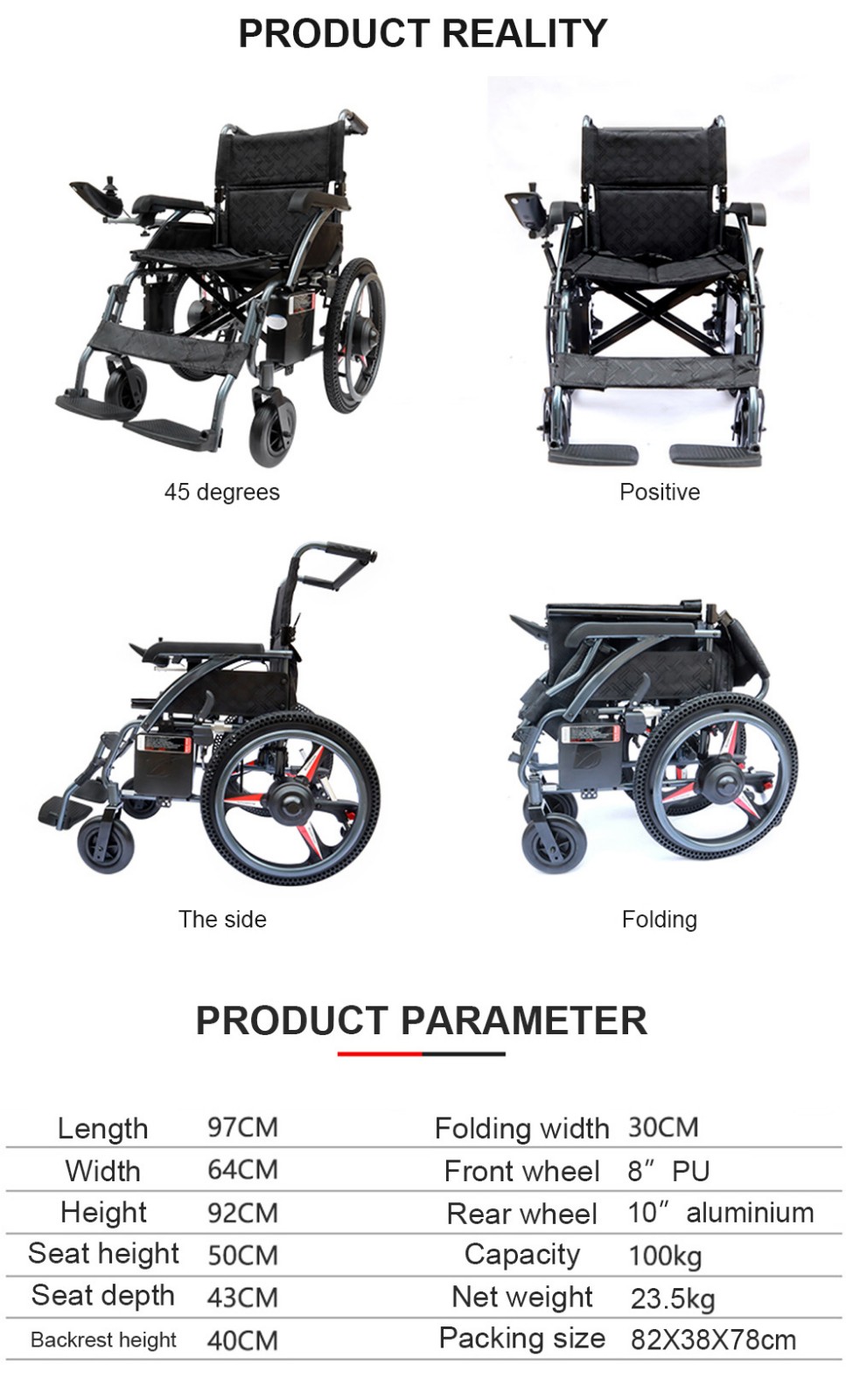In modern society, electric wheelchairs have become essential mobility aids for many elderly people, those with mobility impairments, and those undergoing rehabilitation. They not only enhance freedom of movement but also play a significant role in daily living assistance.
However, many users often wonder after purchasing an electric wheel chair: How long is the lifespan of an electric mobility wheelchairs? How often do I need to replace it?
This article will help you extend the lifespan of your electric mobility wheelchair and reduce long-term costs from multiple perspectives, including structural components, usage environment, and maintenance.

What is the Average Lifespan of an Electric Wheelchair?
Generally, the average lifespan of an electric wheel chair is about 5-8 years.
This figure is not fixed but depends on various factors, including product quality, frequency of use, maintenance conditions, and usage environment.
Mid-to-high-end brand power wheel wheelchairs, using high-quality aluminum alloy frames, wear-resistant motors, and high-density batteries, typically have a lifespan of over 8 years.
Entry-level or low-priced power wheel wheelchairs, if used frequently and poorly maintained, may need to be replaced every 3-5 years.
It's important to note that electric wheelchairs consist of several key components—battery, motor, control system, tires, frame, etc.
— — And the lifespan of each component is not entirely consistent. Therefore, determining whether an electric wheel chair needs replacement cannot be based solely on its "years of use," but should be assessed comprehensively based on the condition of each component.

What are the lifespans of the main components of an electric wheelchair?
To more accurately understand the overall lifespan of an electric mobility wheelchairs, we need to disassemble it for analysis.
1. Battery Lifespan
The lifespan of an electric wheelchair battery is typically around 2-4 years, mainly depending on the battery type and usage habits:
• Lead-acid batteries: Inexpensive but with a shorter lifespan, generally requiring replacement after about 2 years;
• Lithium batteries: Lightweight, high energy density, long cycle life, usable for 3-5 years or even longer.
If the power wheel wheelchair experiences a significant decrease in range, longer charging time, or abnormally rapid power consumption, it often means that the battery life is nearing its end.
2. Motor Lifespan
The motor of a power wheel wheelchair is the core component that determines its power performance. High-quality motors can last 5-10 years, but prolonged use in high humidity, high temperature, or dusty environments may lead to carbon brush wear and decreased motor efficiency.
Regularly checking the motor's operating sound and heat generation, and keeping it clean, can significantly extend its lifespan.
3. Control System Lifespan
The controller is the "brain" of the electric wheel chair, responsible for regulating current and speed. Its lifespan is typically over 5 years, but it needs to be protected from water ingress and vibration damage.
If slow acceleration, abnormal steering, or control failure occurs, it is recommended to have it repaired or replaced promptly.
4. Frame and Structural Component Lifespan
The frame is usually made of aluminum alloy or steel, making it sturdy and durable. Under normal use, it can last 8-10 years, making it almost the longest-lasting part of an electric wheelchair.
However, if frequently used on bumpy roads or stored in a humid environment, screws may loosen or rust may occur; regular inspection and tightening are necessary.
5. Tire and Braking System Lifespan
Tires are wear parts; the rubber material has a lifespan of approximately 1-3 years. Wear and tear will be faster if the user frequently travels outdoors, on gravel, or on slopes.
The braking system should also be tested for sensitivity regularly to ensure safety.

Why is there such a large difference in the lifespan of electric wheelchairs among different users?
This mainly depends on usage frequency, usage environment, and maintenance habits. Even electric mobility wheelchairss of the same model can have a lifespan that differs by 3-5 years.
1. Different Usage Frequency
Users who use their vehicles for extended periods every day will naturally experience faster wear and tear on the motor and battery.
For example, the lifespan of a power wheel wheelchair used for 8 hours a day may differ by a factor of two from that used for 2 hours a week.
2. Impact of Usage Environment
• Flat urban roads: Less wear and tear on electric wheel chairs;
• Rural or outdoor environments: Dust, bumps, and moisture accelerate the aging of tires, motors, and control systems;
• High or cold regions: Extreme temperatures affect battery performance and charging/discharging efficiency.
3. Maintenance and Storage Methods
If an electric wheelchair is exposed to the outdoors, rain, or sunlight for extended periods, metal parts are prone to corrosion, and the electrical system is more susceptible to damage.
Proper maintenance (such as regular cleaning, charging, and inspection) can significantly extend the lifespan of your electric wheelchair.
How do I know when my electric wheelchair needs replacing?
Determining whether an electric wheelchair needs replacement involves more than just considering its age; it's crucial to focus on its actual performance and safety. The following signs often indicate the need for replacement or major repair:
1. Significantly Reduced Battery Life
If the electric mobility wheelchairs's battery life on a single charge decreases to less than 50% of its original capacity, and this cannot be restored even after battery replacement, it may indicate aging of the motor or wiring.
2. Control Malfunctions or Frequent Failures
For example, sudden acceleration, inability to steer, unstable braking, or delayed operation indicate an unstable control system and potential safety hazards.
3. Increased Noise or Vibration
Aging motors, shock absorbers, or axles can lead to unstable operation, affecting comfort and indicating severe mechanical wear.
4. Loose or Rusty Frame
Cracks or severe deformation in the frame will compromise the overall structural safety of the vehicle. Continuing to use it in this condition poses a risk, and replacement should be considered.
5. High Repair Costs
When repair costs approach or exceed 40% of the price of a new electric mobility wheelchairs, replacing it with a new one is usually a more economical option.

How to Extend the Lifespan of an Electric Wheel Chair?
Making your electric mobility wheelchairs more durable depends on proper use and scientific maintenance. Here are some practical suggestions:
1. Proper Charging
• Do not wait until the battery is completely depleted before charging;
• Use the original charger;
• Avoid prolonged plugging or overcharging;
• If not used for an extended period, charge it monthly to maintain its operation.
2. Regular Cleaning and Inspection
Remove sand and dust from tire crevices and keep the motor vents clear.
Regularly check screws and connections for looseness to prevent abnormal noises or vibrations during use.
3. Avoid Overloading
Each electric wheelchair has a rated load capacity (usually 100-150 kg). Prolonged overloading will not only accelerate motor aging but may also cause the control system to burn out.
4. Proper Storage
When not in use, the power wheel wheelchair should be stored in a dry, well-ventilated indoor environment, avoiding direct sunlight and rain.
In low-temperature winter environments, the battery should be stored with a certain charge to prevent damage from depletion.
5. Regular Maintenance and Inspection
It is recommended to have a comprehensive inspection performed by a professional every 6 months, including:
• Motor current and efficiency testing;
• Controller response check;
• Brake system calibration;
• Battery capacity testing.
What are the common reasons for the short lifespan of electric wheelchairs?
Many users report problems with their electric mobility wheelchairss after only two or three years of use. This is often related to the following factors:
• Frequent overload or prolonged full-speed operation, causing the motor to overheat;
• Failure to charge the battery on time or excessive deep discharge, leading to cell aging;
• Use in rainy, wet, or muddy conditions, causing short circuits in the control system;
• Neglecting regular inspections, allowing small problems to accumulate into major malfunctions;
• Using non-original parts, affecting overall performance and safety.
Proper use and maintenance can extend the life of a power wheel wheelchair by several years.
How often should I replace my electric wheelchair?
Generally, if you maintain your electric wheel chair well, it can typically last 5-8 years before needing replacement.
However, it's advisable to replace it sooner in the following situations:
• Frequent malfunctions and infrequent repair intervals;
• Discontinued parts or excessively expensive repairs;
• Changes in the user's physical condition requiring different functions (e.g., tilting, standing, or folding wheelchairs);
• Decreased safety features, making it unsuitable for daily mobility needs.
From an economic perspective, timely replacement of your electric mobility wheelchairs not only reduces maintenance costs but also provides greater comfort and safety.
How to choose a more durable electric wheelchair?
If you are planning to replace or purchase an electric wheel chair for the first time, the following points can help you choose a more durable product:
• Choose an electric wheel chair from a reliable brand and check if the after-sales network is comprehensive;
• Pay attention to the configuration of core components: motor power, battery type, and control system stability;
• Prioritize lithium battery models, as they have a longer lifespan and are lighter;
• Check the frame material: aluminum alloy is more corrosion-resistant, while carbon steel is more robust;
• Choose models with high parts compatibility for easier maintenance later on.

The Lifespan of Your Power Wheel Wheelchair is in Your Hands
The average lifespan of an electric mobility wheelchairs is between 5 and 8 years, but with proper use and regular maintenance, it can be extended to 10 years or even longer.
Key factors affecting the lifespan of a power wheel wheelchair include:
• Battery type and charging habits;
• Usage environment and frequency;
• Maintenance level;
• Component quality and brand support.
If you find that the electric wheelchair's performance is declining, malfunctions are frequent, or safety hazards are increasing, you should consider replacing it with a new one.
After all, a stable, long-lasting, and responsive electric mobility wheelchairs is not only a means of transportation but also an important partner in ensuring a high quality of life.
Does Dayang Medical supply to mobility equipment brands?
Yes, many international mobility equipment brands purchase from Dayang Medical. We provide OEM manufacturing, customized branding, and wholesale supply directly from our factory in Foshan, China. Our R&D team supports unique product designs, while our production bases ensure cheap prices with high quality standards.
By working with Dayang Medical, mobility brands gain a strong supplier who helps lower purchasing costs while maintaining the quality reputation needed in the healthcare market.


